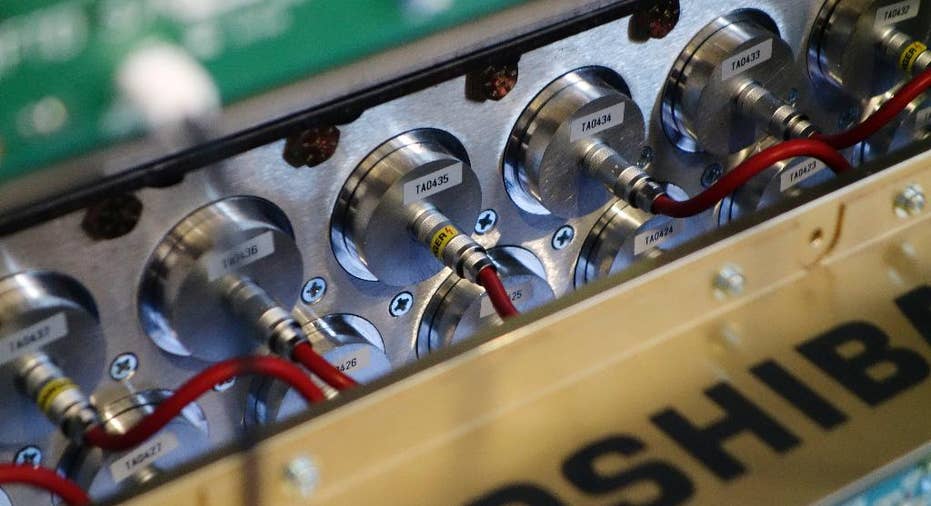Toshiba's subatomic technology to look inside Fukushima atomic reactors still faces challenges

YOKOHAMA, Japan – The cutting-edge technology was billed as a way to decipher where exactly the morass of nuclear fuel might sit at the bottom of reactors in the Japanese power plant that went into multiple meltdowns four years ago.
But what went wrong, even in a simple demonstration for reporters Friday for the 500 million yen ($5 million) project, was a sobering reminder of the enormous challenges that lie ahead for the decommissioning of Fukushima Dai-ichi.
Muons are cosmic-ray subatomic particles so tiny they go through almost anything except for so-called heavy elements like uranium and plutonium used for nuclear fuel. They can help present a picture of what's inside an object, similar to the way doctors use X-rays, and have been used to study the Egyptian pyramids, the insides of volcanoes and ship cargo at ports.
The ideal scenario goes like this: Two giant walls more than two stories high will be set up right next to each reactor to shoot out muons so that data from how the muons scatter after hitting what's inside, picked up by sensors, can be analyzed. Such image-mapping is possible because muons will bend at different angles, depending on the material they hit.
But a programming glitch could not be fixed in time for Friday's demonstration at Toshiba's research center, near Tokyo, to show any image, even a mock-up, from the muons.
All reporters got to see was the huge equipment, metal with lots of wirings and blinking little lights, in a giant garage-like building, and on its side, not straight up as it would be when put to use at the plant.
Experts have long said that what's crucial for decommissioning is getting an image of the nuclear fuel after the March 2011 tsunami crippled backup generators at Fukushima Daiichi, setting off the worst nuclear catastrophe since Chernobyl.
No one knows where the molten fuel debris lies, and in what shape or state. Tokyo Electric Power Co., which operates Fukushima Dai-ichi, has said it likely sank to the bottom of the plant. But the fuel could have dropped even beyond.
Tadashi Yotsuyanagi, an official in charge of the muon project at Toshiba Corp., acknowledged radiation would be an obstacle for people doing the construction work to set up the walls. High exposure to radiation is unhealthy, sometimes fatal.
But once the image is relayed to a distant computer, studying that won't require people to be near radiation, the plus of using muon technology for studying nuclear plants, according to Adrian Hillier, an expert on muons at the STFC Rutherford Appleton Laboratory in the U.K.
Toshiba plans to start setting up the "muon trackers" at Fukushima Dai-ichi sometime after October but before March 2016. The Japanese electronics giant, which owns Westinghouse Electric Co. of the U.S., is one of the main companies behind Japan's nuclear industry, including Fukushima Dai-ichi. Toshiba has been working on the muon technology from right after the disaster, with the help of the Los Alamos National Laboratory in the U.S.
But Yotsuyanagi acknowledged the technology would not be able to get the complete image toward the bottom of the reactor. He also said heavy radiation in the area would throw the sensors off, although that can be figured into the calculations of the scattered muons.
David Ireland, a professor who heads the Nuclear Physics Group at the University of Glasgow, said muons may be the only way to probe inside atomic reactors.
"There are not really any other non-invasive options that will allow inspection," he said in an email.
___
Follow Yuri Kageyama: http://www.twitter.com/yurikageyama



















